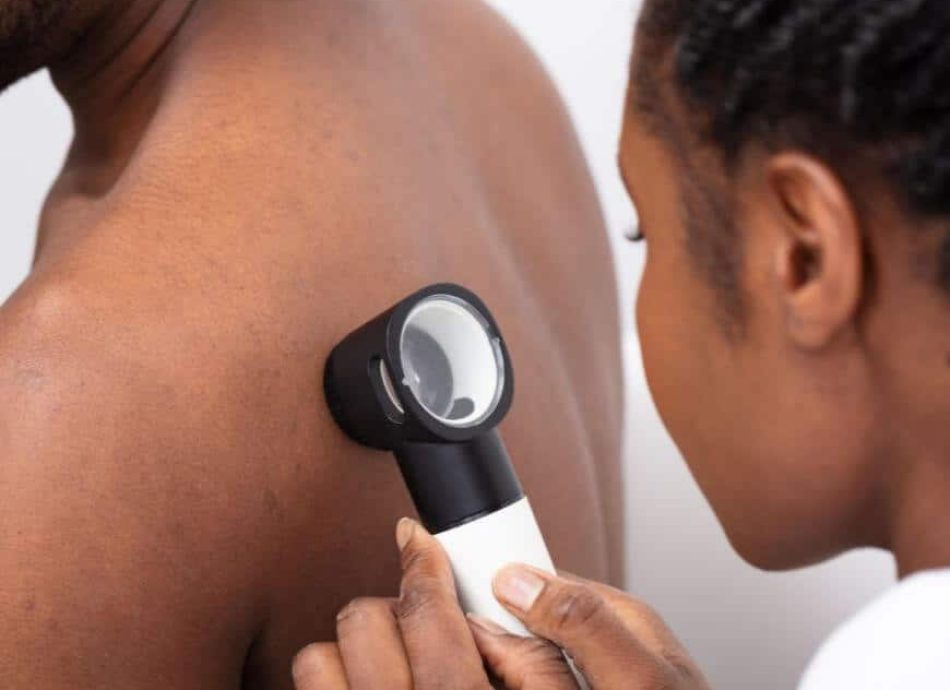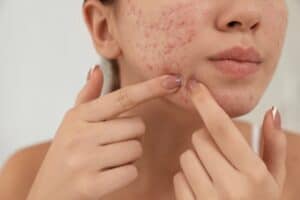Award winning dermatology service, with over 20 years of experience
Short waiting lists, on some occasions offering same week appointments
Safe environment, in Care Quality Commission approved facilities
UVB PHOTOTHERAPY IN SHREWSBURY, SHROPSHIRE
The term phototherapy means the use of light to treat medical conditions. Natural sunlight has been found to be beneficial in certain skin disorders for thousands of years and UVB Phototherapy treatment works by exposing the skin to an artificial light source. These light rays have an anti-inflammatory effect on the skin.
It is the ultraviolet part of the radiation produced by the sun that is used in phototherapy, namely the Ultraviolet A (UVA) and Ultraviolet B (UVB) wavelengths. There are two main types of phototherapy:
- UVB in which the skin condition is treated a small part of the UVB spectrum to treat the condition
- PUVA (Psoralen + UVA) also sometimes called photochemotherapy, in which UVA radiation is combined with sensitiser (a chemical that increases the effect of UVA on the skin) called a psoralen. The choice of the type of phototherapy to use is dependent on the type of skin condition, previous responses to treatment among other factors. UVB is available at both the St. Michael’s Clinic and Donnington sites. PUVA is currently available by referral onwards to hospital outpatient’s department
In UVB phototherapy, treatment lamps are used to produce the rays. UVB treatment is more effective as a treatment than natural sunlight as harmful and ineffective sunlight rays are able to be filtered out to minimise the risk of burning.
FREQUENTLY ASKED QUESTIONS
WHAT CAN UVB PHOTOTHERAPY TREAT?
UVB Phototherapy is an effective treatment for many different skin conditions, particularly psoriasis, eczema and vitiligo. This treatment can also be used to build up a tolerance to natural light for people who have light sensitive skin conditions.
WHAT DOES UVB PHOTOTHERAPY INVOLVE?
During your treatment, your skin will be examined and you will be given goggles to protect your eyes during treatment. You will stand in the UVB machine for up to 10 minutes where UVB rays in a specific dose will be shinned onto your skin. The machine is bright and can feel quite warm. Treatments usually take place 2-3 times a week for 12-16 weeks.
Most patients report an improvement in their skin condition after around 30 treatments and the effects last for around four months. The number of treatments required and the success of this treatment does depend on the individual and the skin condition.
REQUEST A CALL BACK
Please fill in this form and one of our team will give you a call back to arrange a consultation with one of our expert dermatologists.

HEAR FROM OUR PATIENTS
WHY CHOOSE uvb phototherapy FROM ST. MICHAEL'S CLINIC?
INSIGHTS AND ADVICE

What is the difference between the various types of Botox®?
There are many popular aesthetic treatments for wrinkles; Botox® injections being one of the most popularly known treatments. Botox® is the brand name of the neurotoxin Botulinum Toxin produced by Allergan pharmaceuticals. We tend to refer to all treatments with a muscle relaxant as Botox®

Treating Hyperhidrosis with Botox® in Shrewsbury
Treating Hyperhidrosis with Botox® in Shrewsbury The sunshine being out is something to celebrate, but it can be an issue for many of us too. Some of us suffer from excessive sweating, such as hyperhidrosis. The summer weather can fill sufferers with dread as their

Why am I getting spots during isolation?
Why am I getting spots during isolation? Due to the Covid-19 pandemic, we have all experienced lockdown this year. We’re wearing less make-up, getting more rest, we’re even getting an hour of fresh air and exercise every day and if there’s one thing we all




